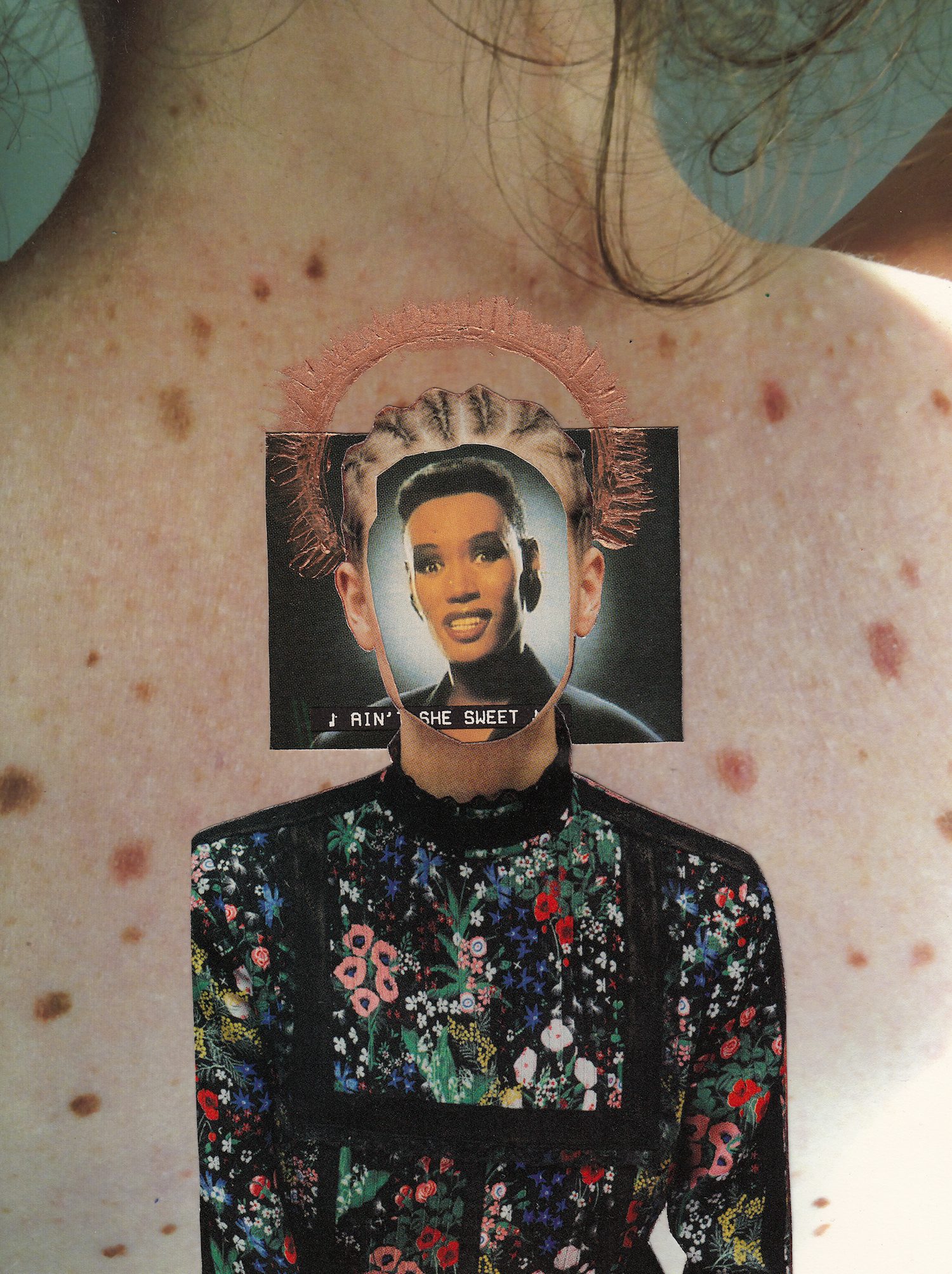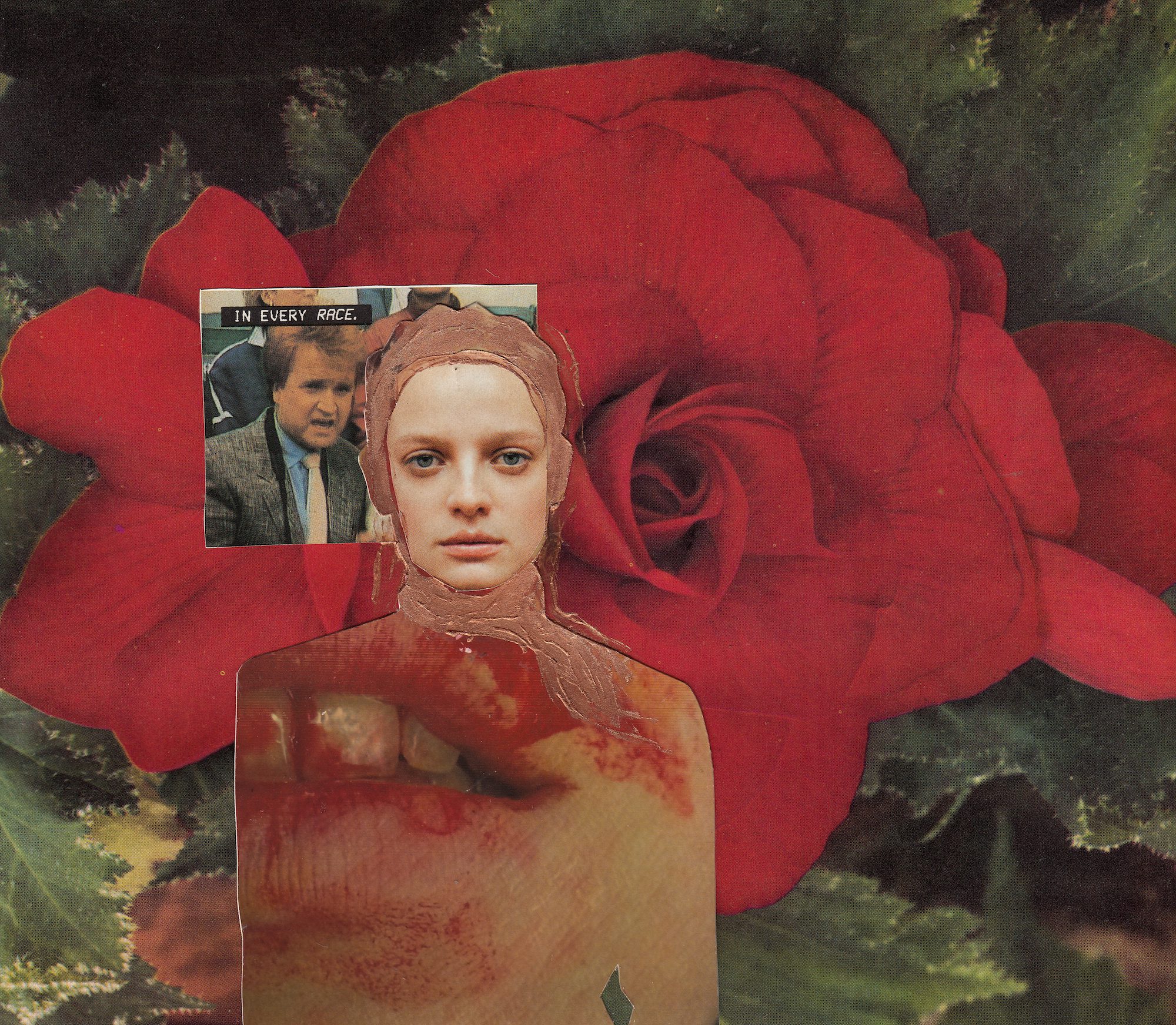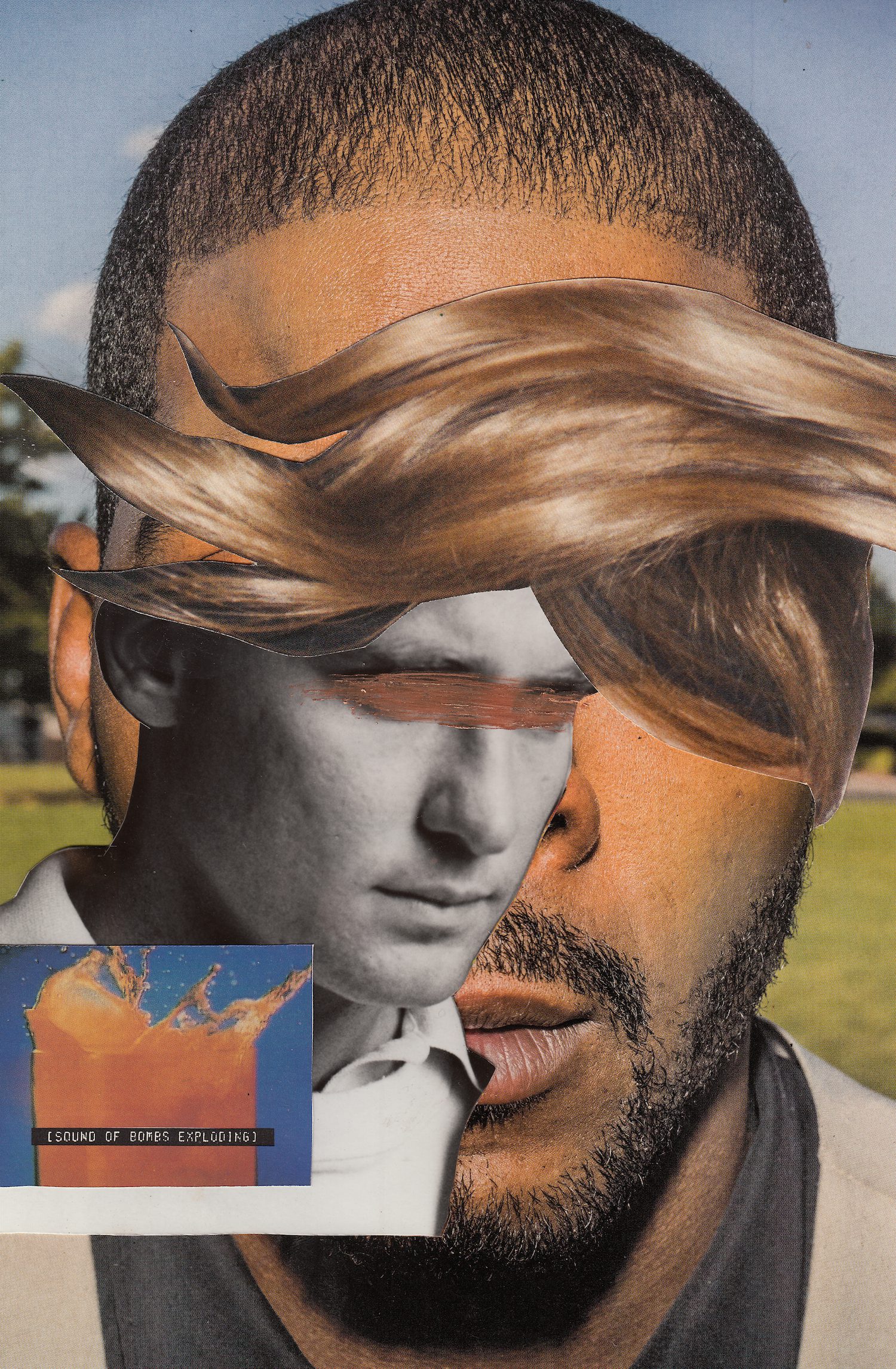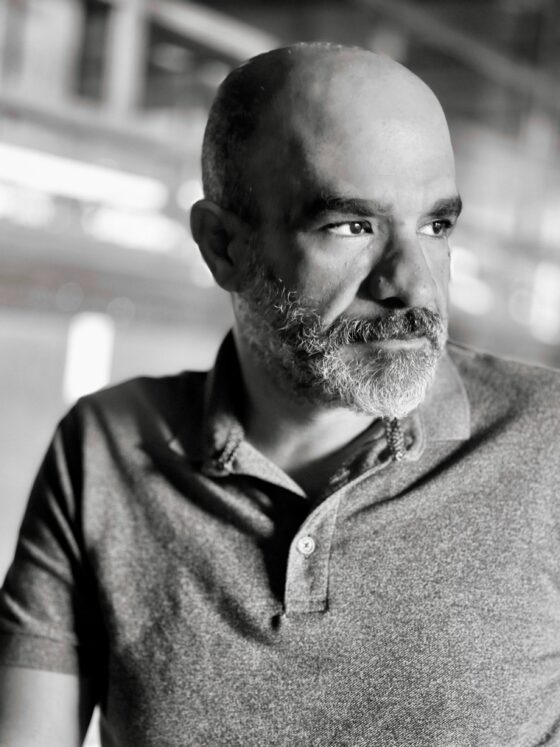
“Shades cannot be fixed; color is, eternally, at the mercy of the light” –James Baldwin
What if I said: to be white in America is to be former Defense Secretary Robert Gates or Congressmen Ed Royce and Adam Schiff, the first thin-lipped, thin-haired white people I saw when I landed home this evening, turned on the television at midnight, and saw a show moderated by another pink-jowled, thin-lipped, thin-haired, soft-spoken gentleman from Little Rock, Arkansas.
The show was not called “What It Means to Be White in America,” though it could have been. Why? First, multiple simulations of this show and its characters cross the media landscape, so that their white shadows clearly shape a privileged, occupying presence on our glowing devices. Second, the show was an earnest—it always sounds “earnest”—and considered—it always sounds “considered”—evaluation of “the Syrian Refugee Question,” which has become the new “Jewish Question” or “Negro Question” or “Palestinian Question” or “Indian Question,” which is always the alien question out of left field, which is America’s heartland, about the presence of aliens among us: “What should we do with those people. They puzzle us,” as aliens will. What if I said: if you don’t know the history and significance of those earnestly intoned justifications for closed landing strips and borders, “where your skin/is your passport” (Yusef Komunyakaa), then you should ask someone who has always been seen as a question. Or, if not, you will be fated to conflate the importance of being earnest with its impotence, as heard in daily news briefings spun by White House press secretary, Josh Earnest.
I ask myself, and it sounds absurd: as someone who looks white in America, what does it feel like to be white in America? It is, no doubt, a ridiculous, privileged question, but it arises because I was born in Israel, grew up a Jew and was schooled in Jelani Cobb’s Nuyorican Jamaica(n), Queens— with parents originally from Deutschland before they left as refugees to Palestina. In Nazi Deutschland—and l absorbed this condition when I was young and it has stuck with me until now—my tribe, and by extension my assimilated family, was caricatured as, yes, Schwarze, or darkies. Take a look at the cartoons of the time: Jews as circus apes, sub-human, their arms patched with yellowed Stars of David.
What if I said: I certainly look white in America, but I somewhat carry the family feeling of having once upon a time been seen as a yellowed black in Deutschland which, obviously, since no one upon seeing me here knows that faded “dark history,” means nothing in terms of how most people born and living in the US see me today.
This identification with my family caricature in Deutschland, plus my being only a naturalized therefore not “natural” or true American citizen, does not necessarily make me Super Empathy guy with or honorary member of the non-white, marginalized peoples in America (I do not pass or get a pass that says, “I get the desires and sufferings of others”). It only makes me an insider among so-called white people in America. It has the power to make me an invisible alien among people who do not know my history and thus trust they can say things they would say to no one but their family, because I look like them and, they believe, share their so-called “white” history. I am given a pass to hear the words from those people today who Kiese Laymon calls “the worst of white folks,” who resemble those James Baldwin once called “the innocents,” who “have destroyed and are destroying hundreds of thousands of lives and do not know it and do not want to know it. It is the innocence which constitutes the crime.” I can listen and appear as if I understand their fair intentions towards non-white peoples and then, like a medium—or a ghost—I can channel them, elsewhere, to other peoples.
The secret is out: I am well positioned between white and non-white peoples, very much like the narrator in the Bosnian writer Semezdin Mehmedinović’s poem, called “Open Dialogue,” beautifully translated by Ammiel Alcalay, and written on an Amtrak train in the immediate aftermath of 9/11:
Open Dialogue
“What are you reading?”“Poems by Jallaludin Rumi, a
Poet born in Afghanistan.”“Where are you from?”
“Bosnia.”
“Serbs and Croats, right? Is anyone else there?”
“There are others.”
“What color are your eyes?”
“Green till Colorado
But since we passed Apache Canyon
They’re blue in the
New Mexico light.”“So then what kind of Muslim are you?”
“White.”
(Of course, someone reading this today may say, well: “like Mehmedinović’s absurdist chameleon narrator, you can be white in America, no matter who you really are—in his case a foreign “white” Muslim in America, in your case a foreign “white” Jew in America. You have Prince Hamlet’s choice to meditate and “feel” and share your feelings, the will to be perceived as white while you are or are not white. To think about whether to be or not to be “white” is a luxurious question, which no unarmed black man can afford to stop and ask about his blackness. You are free to see it parenthetically. As an aside. You have not been historically and painfully doubled over, over and over, in perpetual trouble because of double consciousness. See W.E.B. Du Bois.”)
What if I said: I agree.
What if I said: let me tell you about Cantara, a young, Palestinian student in my class studying double consciousness as it appears in the character of Clay in LeRoi Jones’s/Amiri Baraka’s 1964 play Dutchman. Cantara wears the hijab. She takes this passage from Du Bois quite literally and personally:
…the Negro is a sort of seventh son, born with a veil, and gifted with second-sight in this American world,—a world which yields him no true self-consciousness, but only lets him see himself through the revelation of the other world.
She believes she is positioned like African-Americans in America. She negotiates secular and religious worlds at the same time, dealing with white people who either misunderstand the veil as a symbol of an oppression imposed on her and which they believe she is not enlightened enough to understand for herself, or who see her covering as an ominous sign of her sympathy with the rise of an Islamic caliphate in America. If she is not forced to defend herself from these latter assumptions, then she might be expected to lift the veil and smile for the camera and integrate to some American value whose shape and identity is fixed. Baldwin called it “the nature of that (American) dream,” founded on market capital and competitiveness as markers of freedom, which “we do not dare examine.” And, as Talal Asad reminds us, any way of life, in this case American, which we believe holds an essential nature, ironically carries the character of transcendence, of the seemingly sacred and thus unchallenged, much like a religion, which we will hesitate to critique. She thinks: what values do so-called white people in America, seeing her veil, project upon her, and how does that not correspond with what she believes to be her essence, which the man who just called her sister a “bone headed terrorist” will never find out? But he’s not the (deeper) problem or question. I am.
What if I said: even though my hair is curly and my lips thick, even though I am seen by Jews as an alien in my own birthplace because my politics are on the wrong (Palestinian) side of the Israeli green line, even though my tribe was once seen as black in Deutschland, I can’t expect Cantara to see me as a teacher who acts differently towards her than any Israeli soldier her family has encountered “back home” in Israeli-occupied territories, or than any random white person her sister might face in Sacramento, California after the Paris attacks. I can’t expect her to trust that “my identity is any more real to me than my humanity,” as Baldwin once said it. It’s shameful to be this suspect as an essentialized character in someone else’s eyes, but here I am. I turn a bit pink and defensive here, more than a little like that television show moderator, who was, if I now remember, cavalierly dismissed by my superficial description of him at the start of this writing, which if one extends the logic, means I am now all but dismissing myself. In Cantara’s eyes, I appear as a “white” Israeli Jew, and at first sight it does not matter to her if I was born in Little Rock or near Jerusalem’s Temple Mount. So it goes. There is nothing I can do about it, being to Cantara “the other world” this side of her veil. Gone.
What if I said: to be white and gone to Du Bois’s “other world” is to be the way Carlos sees some tourists in San Francisco. Carlos, a native of Guatemala, runs a restaurant. A few weeks ago we talked:
“Carlos, which tourists—Italians Swedes, Germans Japanese, Persians—are the most difficult customers?”
“Coloradoans.”
“Why? Do they expect better service?”
“No, their silence tells me they think they get good service. They never complain.”
“Then why, Carlos?”
“They never say a word.”
“But that’s good, no? You just said they don’t complain, didn’t you?”
“No, it’s not good.”
“Why?”
“They’re cold.”
“Well, it’s a cold State.”
“No, that’s not the same, not what I mean. What I mean is they open the door, come in, order, eat fast, say thanks, and look cold, right through me, as if I don’t exist, and they don’t say a word to me, as if they want me across the border, gone.”
“Any other tourists like that?”
“Yeah.”
“Who?”
“People who come to the city on the weekend to watch mostly black college athletes play football against the local teams.”
“From where?”
“From Oregon.”
What if I said: Carlos’s description of Oregon football fans reminds me of the words of sports sociologist Harry Edwards: “SEC teams look like Ghana on the field and Sweden in the stands.” But I wonder: can Carlos’s fans, who follow Pac 12 teams, see themselves as Portlandia Swedes? And who could convince them to hold that mirror up to themselves so that they saw what Carlos saw when he gazed at them? And could a white Southerner from Little Rock have a corresponding dilemma? Could he see himself as one of Harry Edwards’s Swedes in the stands at an Arkansas Razorbacks football game, or, perhaps, would he give himself a pass and see himself more favorably, perhaps as a “Bubba,” like our first “black” president, Bill Clinton, in that he assumes he is cousins with people of color?
Of course, so-called white people need to be reminded that, when Toni Morrison said Clinton might be our first “black” president, she did not mean it as the complement it was later taken to be by liberal white people wanting to feel good about their support of black causes through their support of him. She did not mean that, “Bubba got us, understood us as if he were family.” Said Morrison, about the perpetual policing and gotcha politics of Clinton’s presidency: “I said he was being treated like a black on the street, already guilty, already a perp.”
What if I said: If she is elected, and only if she is morphed into the perp her husband was turned into, will Mrs. Clinton, by association, become the third “black” president in America, after Mr. Obama. That sure might start exasperated talk among some white folks of a surplus of people of color in the White House.
What if I said: there is a surplus of people who still do not grasp the implications of what James Baldwin said over fifty years ago to Castlemont High School students in Oakland, California:
We, all of us here now, are living through a certain kind of turmoil which endangers all of our relationships. This turmoil is sometimes described as racial. We can use that word for the moment, but it is really not racial, it is historical and it is personal.
What if I said: if we do not “use that word for the moment,” then so much will depend on the history of white people before they were “white,” and the history of black people before they were “black.” Baldwin often articulated this beautiful, historically informed accusative note, and it reverberated: “as long as you think you’re white, I’m going to be forced to think I’m black.” His statement seems self-evident as a warning to nuance our thinking on race, but he knew it was difficult to act on this kind of evidence: “to act,” he wrote, “is to be committed and to be committed is to be in danger” of losing one’s identity, of who one thought one was, particularly if one were to think beyond color as something reduced to race. For instance, if one thought oneself “white”—think poor Irish or Norwegian or German or dark Italian immigrant “races,” before they became “white,” coming to America from the middle of 19th to the start of the 20th centuries—then one probably had conveniently forgotten the history of how one turned white. One forgot, in essence, “the price of the ticket” one paid to become a color that could access the realities of power. Why, indeed, would one want to remember and face the danger of losing that advantage? Baldwin knew what all this “white” denial of history meant for African-Americans:
Part of the price of the black ticket is involved—fatally—with the dream of becoming white… This is not possible, partly because white people are not white: part of the price of the ticket is to delude themselves into believing that they are.
What if I said: while people still believe they are white in America, that delusion, and the dream upon which it is founded, needs to be seriously examined. Think of it: the longer it continues, the more any new refugees to America can only visualize an ahistorical “white” people as the color representing the standards of the dream they are after. There is something blindly wrong in a country where, if you ask recent immigrants from Asia or the Middle East to illustrate the measure of success and articulate the core values of America, they don’t even think to color these in the histories of black or brown or red people.
What if I said: for that to be faced and changed, it may be time for us to grasp what Baldwin meant in his essay, “On Being White and Other Lies,” where he writes about white people who have come to believe in their own historical invention of “whiteness.” That among those lies they have become and which they have spread among blacks, is the metaphor Langston Hughes used to describe “Cracker” accented Marines, New York bankers, and US government officials occupying Haiti in 1932: “white shadows” which “have fallen on this land of color.” What if I said: it is time to make what is an impossible lie in the world of physics—white shadows—just as impossible in this land of color: where, as Baldwin wrote, “Shades cannot be fixed; [and] color is, eternally, at the mercy of the light.”
***
Rumpus original art by Cyrus Finegan.








